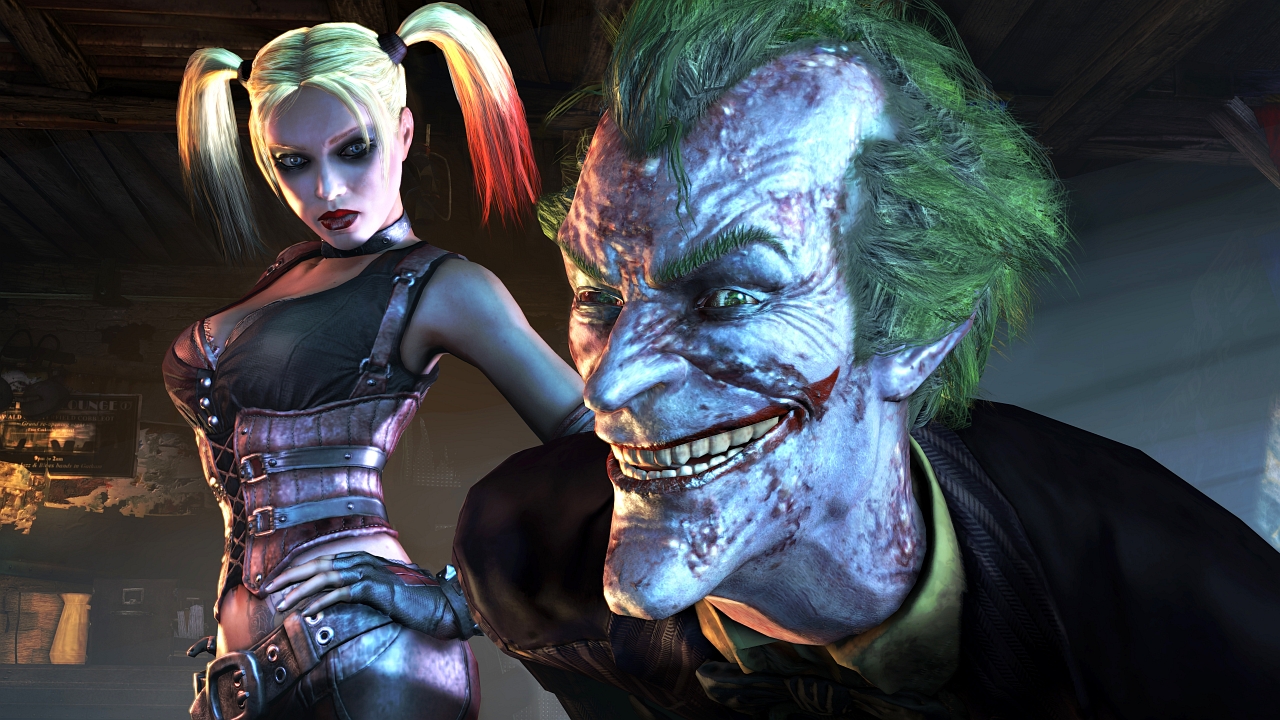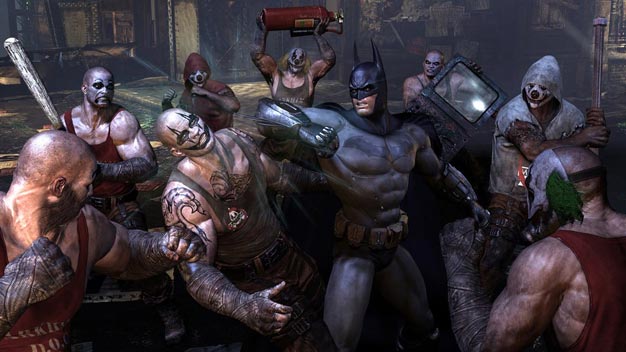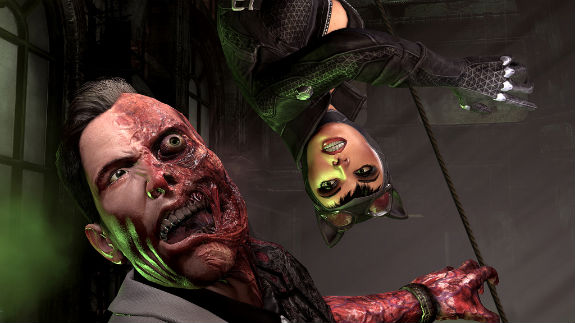This post has not been edited by the GamesBeat staff. Opinions by GamesBeat community writers do not necessarily reflect those of the staff.
I originally thought that Batman: Arkham Asylum was the greatest Batman video game of all time, perhaps even one of the greatest entertainment mediums for the comic book hero ever made. But Rocksteady has left me dumbfounded and confused. Batman: Arkham City is so good, it makes the first game look bad!
All of the classic elements I so dearly loved about the iconic bat growing up can be found in the game. From the witty, precarious humor of the joker and the many clashes you'll have with him throughout the game, to squaring off with good old Mr. freeze, it felt like I was reliving the good old days of my childhood. It was refreshing to see the Joker and Batman go at it again and again. Nothing felt out of sync.
But the best part about it was the fact that I actually thought I was Batman. From the moment the game powered on, I couldn't hang up the suit and leave Arkham City to burn just like that. Rocksteady's brilliant sense of pacing with the plot and immersion with the player kept me glued to the screen and transfixed in the knowledge that every little thing happening I was apart of.
Hot on the heels of the game's predecessor, Arkham City's story picks up shortly after where Arkham Asylum's plot left off. The Asylum has been shut down and all of the notorious criminals housed there were relocated into Arkham City, a sectioned off part of Gotham reserved just for the city's criminals. Batman's job is to figure what the hell is going inside of it.
In one of the greatest openings to a game I've ever seen in recent years, Bruce Wayne purposfully sets himself up to be kidnapped at his own rally and is thrown into Arkham City by the man who runs the place, Hugo Strange. In yet another race against time, Batman has just a single night to figure out what Strange's mysteriously named plan, Protocol 10 is and protect the other inmates from many of Gotham's most notorious criminals who are also imprisoned in Arkham City. Doing so isn't very easy however, given the fact that there is an all out gang war going on in the prison between The Joker, The Penguin, and Two Face over turf and ultimate control of the super prison.
Fans of the comic book hero will be pleased to know however that thanks to the new change in scenery, and the ability to free roam around the city, Batman feels like Batman whereas in the first game, it felt like you were more so forced into many of the fights because there were practically no way to avoid them. Batman's job: patrol the streets of Gotham and strike from the shadows. And you can do just that.
Even when you do manage to rustle yourself into a fight, the polished up combat system from Asylum flows perfectly throughout every fight. One button mashes a guy's face in while the other counters. Building up combos will increase the speed of the fight too and trigger some pretty cool slow-mo animation knockout scenes that make you feel like a bad-ass by the time the fight's over.
But, you're Batman! He never goes into a fight unprepared without his personal bag of tricks and gadgets to help get him out of some of those "iffy" moments, or to simply help balance out a typically unfair fight. From the start of the game, all of the gadgets you had obtained by the end of Arkham Asylum are at your disposal so you don't have to start back at square one and re-unlock everything you already have. Many of the gadgets have been improved or given new capabilities as well. For instance the Cryptographic Sequencer can also track signals, while the remote controlled Batarang now has a brake and boost for easier navigation.
There are an assortment of new gadgets to play with as well, my personal favorite being the the new ice grenades that can freeze enemies and make walkways across water. You can also use a new signal disrupter to jam enemy firearms and explosives, which came in handy when trying to avoid rooftop snipers. You can also use smoke pellets to escape fights or confuse and distract enemies giving you time to sneak around behind them for a swift, yet brutal take-down.
The famed puzzles from the previous game are back as well, but the navigational part has been toned down so players don't play through the entire game using detective mode, a common complaint with the game's predecessor. They're still here however and just as fun as before. Players will be able to backtrack sniper rounds to hunt down assassin's, follow blood trails left behind by enemies, or even tap into the city's communication and tracing network that the police use to hunt down criminals and report disturbances.
But if all of this extra stuff sounds like a nuisance to you and you would rather opt to just burn right through the game's main storyline, you can! Just know that there are hours and hours of side content in Arkham City that you can complete! Side missions will frequently pop up as you work your way around the city. A mission might be simply saving someone from a fistfight to rescuing kidnapped police officers from inmates. The game also contains over 400 brand new Riddler challenges, which make up many of the multiple side missions that you can undertake.
There is so much more to do here than just complete the main story. Many of the side quests will seamlessly fit right into the main plot and may help to answer some burning questions should they arise. Or you might just get to take on yet another famed villain from the comic books in a fistfight! Best of all, you can continue to roam the city and knock out side quests as you please even after you've completed the main story, giving you something else to do once you've beaten the game.
One of the biggest perks about the game however was its musical score and superb voice acting. Arkham City bolsters a superb soundtrack that got caught up in my mind and found myself later listening to the tunes in my car as I drove to work! And if you're a fan of the music from Nolan's recent Batman trilogy, you'll feel right at home here since Arkham City's music heavily borrows from the tone portrayed by the music in the films. And thanks to yet another masterful performance from the voice acting crew, most notably Mark Hamill's role as Joker, the game seemingly came alive right in front of me!
Closing Comments
Batman Arkham City isn't perfect, no game is, but it does deliver a magnificent performance I feel few other games have managed to capture. The voice acting, the gripping story, the heart-wrenching conclusion, and the stellar voice acting performance all come together to create one the greatest Batman experiences of all time.
Score: 10/10
Replay Value: Very High



